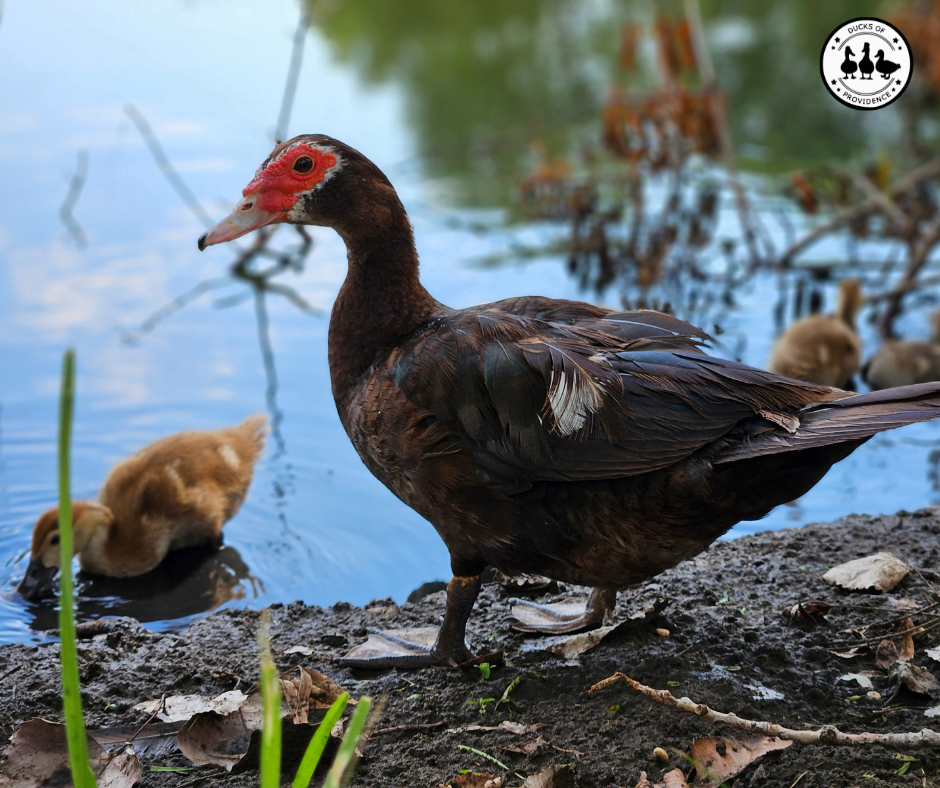
Muscovy Ducks: A Deep Look at Their Unique Traits and Behaviors
September 3rd, 2024
00:00

00:00
Summary
- Muscovy ducks are a unique breed, not descended from mallards.
- Native to Central and South America, known for calmness and size.
- Features include vibrant plumage and distinctive caruncles.
- Exhibit quiet nature, strong flying, and excellent foraging skills.
Sources
Welcome to the unique world of Muscovy ducks, a breed that captures the fascination of duck enthusiasts and breeders alike due to its distinct genetic makeup and physical characteristics. This breed, known scientifically as Cairina moschata, sharply contrasts with most domestic ducks that descend from the mallard. Originating from the lush regions of Central and South America, the Muscovy duck brings a fresh perspective to the diverse avian landscape. Muscovy ducks are renowned not only for their striking appearance but also for their serene demeanor and notable size. These attributes make Muscovies particularly interesting. Their calm nature allows them to adapt to various environments, making them excellent for both rural and more urban settings where noise reduction is appreciated. This quietness is complemented by their size, with males often reaching up to fifteen pounds, and females around eight, showcasing their impressive stature among domestic ducks. The breeds ability to thrive in different climates further attests to its robust nature. From the warm climates of their origin to the southern regions of the United States, Muscovy ducks maintain their thriving populations, demonstrating their adaptability. Their capability to fly, a rare trait in domestic ducks, adds an intriguing layer to their behavior, often leading them to perch in high places like trees and fences, which could pose a delightful challenge to those raising them. Given these characteristics, it is clear why Muscovy ducks are not only a subject of beauty but also of utility. They serve as effective pest controllers in gardens due to their foraging prowess and produce nutritious eggs, adding to their practical value in homesteads and small farms. This combination of beauty, peacefulness, and utility positions the Muscovy duck as a rewarding choice for those looking to enrich their avian collections or simply enjoy the presence of these gentle giants. As we explore further into the attributes and care specifics of Muscovy ducks, their unique position in the duck community becomes even more pronounced, offering valuable insights into effective breeding practices, habitat needs, and the overall joy these ducks can bring to their keepers. Muscovy ducks are immediately recognizable due to their distinct physical traits and unique behavioral characteristics that set them apart from other domestic duck breeds. Their large size is one of the most striking features, with males reaching up to fifteen pounds and females approximately eight pounds. This size not only highlights their physical presence but also enhances their ability to manage different environmental challenges. The plumage of Muscovy ducks is another distinctive trait. These ducks boast a variety of vibrant colors ranging from pure white to deep black, with shades of blue, chocolate, and lavender. The iridescence in their feathers, particularly in the black variety, where green and purple highlights can be observed, adds to their visual appeal, making them a favorite among duck enthusiasts for their aesthetic value. Perhaps the most notable feature of Muscovy ducks is the caruncles—red, fleshy growths around their eyes and beak. More pronounced in males, these caruncles are not only ornamental but also serve as indicators of health and are part of the unique identity of the breed. The presence of these caruncles makes the Muscovy unmistakable and adds an exotic flair to their overall appearance. Behaviorally, Muscovy ducks exhibit several unique characteristics that differentiate them from other domestic ducks. Their calm and quiet nature is perhaps the most appreciated trait. Unlike typical domestic ducks that are known for their loud quacking, Muscovies are relatively silent, communicating instead through soft hisses and coos. This makes them ideal for suburban areas where noise may be a concern for neighbors. Their strong flying ability is another significant behavioral trait. Muscovy ducks are capable of sustained flight, which is a rare trait in domesticated ducks. This ability allows them to perch in trees or on rooftops, providing them with a vantage point for spotting predators and exploring their environment. However, this can also pose a challenge for those who keep them, as securing their habitat to prevent escape becomes necessary. Muscovy ducks are also exceptional foragers. They are adept at controlling pests by consuming large quantities of insects, which makes them valuable for gardeners and those who wish to naturally control pest populations. This foraging ability reduces the need for supplemental feeding and allows Muscovies to thrive in diverse environments, from rural farms to more urban settings. These unique physical and behavioral traits underscore why Muscovy ducks are not simply different in appearance from other domestic ducks but also distinct in their quieter, more reserved demeanor and their robust ability to adapt to and thrive in varied environmental conditions. Understanding these characteristics provides a deeper appreciation of Muscovy ducks and their special place in the world of domesticated birds.